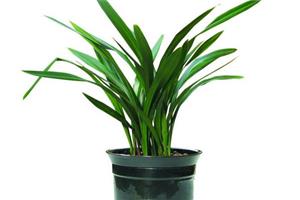The Culture method of Phyllostachys pubescens what to do about the yellowing leaves of Phyllostachys pubescens
Phoenix tail bamboo can absorb formaldehyde, purify the air, often used for potted plant viewing, decorate small courtyards and rooms, but also often used to make bonsai or as a low hedge material, below we take a look at the cultivation method of Phoenix tail bamboo and how to do yellow Phoenix tail bamboo leaves.
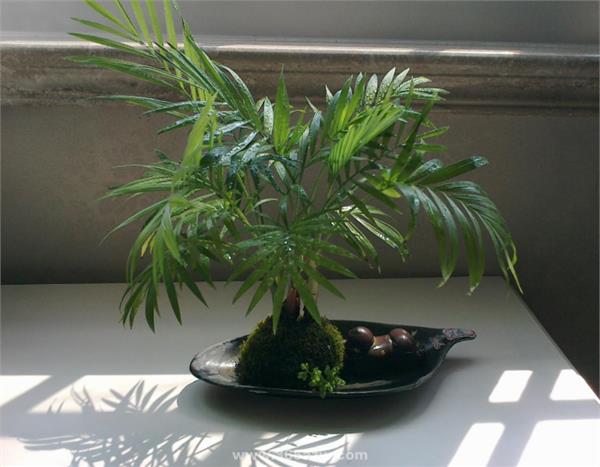
Cultivation method of Phyllostachys aurea
1. Temperature: Phoenix tail bamboo is an evergreen cluster shrub. Likes warm, humid and semi-cloudy environment. Cold-resistant slightly poor, not resistant to strong light exposure, afraid of waterlogging, should be fertile, loose and well-drained loam. Winter temperatures are no lower than 0 degrees.
2. Light: likes light, slightly tolerant of shade, likes warm and humid climate. Likes humidity and warmth, but also likes semi-ventilation and semi-shade. In winter, you should move indoors to a sunny place. Phoenix tail bamboo likes sunny high cool land, there is "sunny is luxuriant, suitable for planting high platform" said; spring, summer, autumn three seasons only need to be placed in the window ventilation place, winter placed in the sunny place, can grow well. The new leaves of the ground-planted Phoenix tail bamboo grow after spring (this is a reflection of fear of cold), but they are always in the four seasons in warm places.
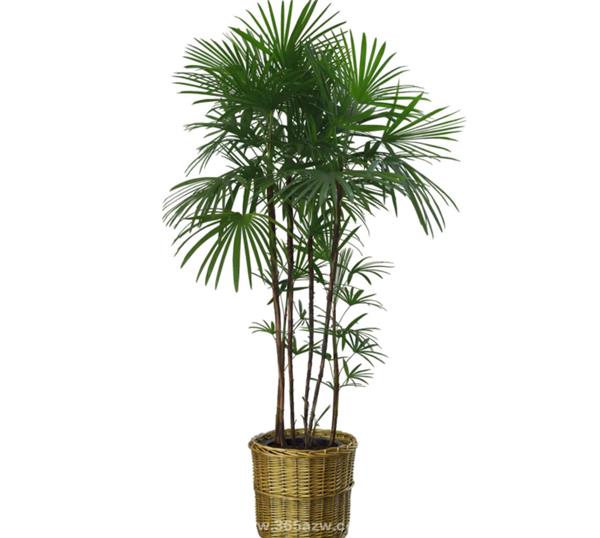
3, soil: Phoenix tail bamboo likes acidic, slightly acidic or neutral soil, pH 4.5 to 7.0 is appropriate, avoid sticky heavy, alkaline soil. North soil alkaline strong, can add 0.2% ferrous sulfate. The soil had better be loose fertile, good drainage sandy loam, usable farmland soil mixes red yellow loam, humus soil and fine sand. If Phyllostachys philippinensis is planted in common pot soil, the survival rate is low, but vermiculite or peat mixed with pearlite can be used as substrate, and the survival rate is higher. To maintain a beautiful posture of the soil requirements are not high, the general loose sandy soil can be.
4. Moisture: Phoenix tail bamboo likes wet and is afraid of accumulated water. After loading the basin, the water should be poured thoroughly for the first time. After that, keep the basin soil moist. Do not water too much, otherwise it will be easy to rot the roots. From the pot to the survival stage, water should be sprayed frequently to the leaves. If the pot soil is short of water, the bamboo leaves will curl. At this time, water should be poured in time, and the bamboo leaves will unfold again. Watering once every 1 to 2 days on average in summer and less in winter, but keep the pot soil moist to prevent "dry freezing".
5. Fertilizer: The fertilizer of Phoenix tail bamboo is mainly organic fertilizer, and the animal manure, garbage fertilizer and river mud can be decomposed. Organic fertilizer is mainly used as base fertilizer, mixed into the pot soil, and the dosage is generally 10% to 15% of the pot soil. Thin nitrogen fertilizer can be applied once or twice a month during the growth period of Phyllostachys aurea.
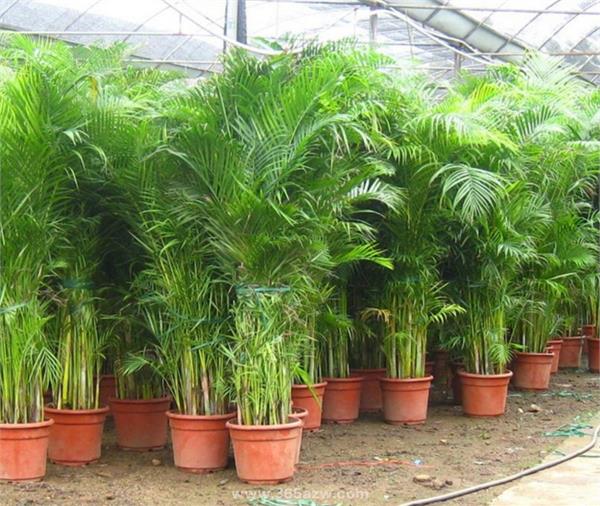
What about yellow leaves?
(1) Too much watering, long-term overwetting of the pot soil, resulting in oxygen deficiency in the soil, so that part of the fibrous roots rot, hinder normal respiration and absorption of water nutrients, causing leaves to turn yellow and fall off. After the first young leaves become pale yellow, and then the old leaves gradually yellow, should immediately control watering, suspended fertilization, and often loose soil, so that the soil ventilation is good.
(2) Drought dehydration. Flower leakage watering or long-term irrigation half-waist water (that is, wet under dry), affecting nutrient absorption, but also easy to cause leaf color dull luster, leaf wilting droop. First, the lower part of the old leaves aging, and gradually from the bottom to the top yellow off. At this time, a small amount of watering and spraying water is needed to gradually restore it and then turn to normal watering.
(3) Long-term fat loss. Long-term no ammonia fertilizer or no change pot change soil, soil nitrogen and other nutrients lack, resulting in thin branches and leaves, thin and yellow leaves. Need to pour pot in time, change into new loose fertile culture soil gradually increase the application of thin decomposed liquid fertilizer or compound fertilizer.
(4) Excessive fertilization. Fertilization too much will appear new leaves hypertrophy, and more uneven, old leaves dry tip yellow fall off, should immediately stop fertilization, increase watering, so that fertilizer from the bottom of the drain hole out, or immediately pour the pot, wash the soil with water and then re-planted into the pot.
5) High temperature. Summer if the sex like cool flowers (such as cyclamen, fuchsia, begonia) on high temperature to let the strong direct sun, easily cause young leaves and leaf edge withered coke, or yellow leaves fall off. It should be moved to a well-ventilated cool place in time.
(6) Excessive shade. If the sun-loving flowers are placed in shade or in a place with insufficient light for a long time, it will lead to excessive growth of branches and leaves, thin and yellow leaves, no flowers or few flowers. Care should be taken to move the flowerpot to the sun.
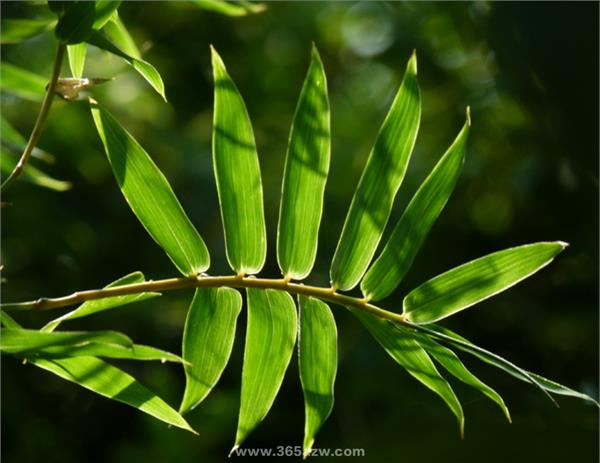
(7) Water and soil are alkaline. The soil and water in most areas of the north contain more saline and alkali. When planting acid-loving flowers, such as rhododendron, camellia, Michelia, gardenia, orchid, white peony, osmanthus, etc., the leaves will gradually turn yellow due to the lack of soluble iron and other elements that can be absorbed by the soil. Acid soil should be selected for planting, and alum fertilizer should be often poured during growth.
8) No ventilation. If the nitrogen fertilizer is too much, the branches and leaves grow into luxuriant, plus long-term unpruned, resulting in insufficient light in the inner bore branches and leaves, easy to cause yellow leaves to fall off. Fertilization should be rational and pruning should be strengthened to make it ventilated and transparent.
(9) Dry air. When indoor air is too dry, some flowers that like humid environment, such as spider orchid, orchid, etc. often appear leaf tip dry or leaf edge scorched and so on. Attention should be paid to water spray, plastic film cover, etc. to increase air humidity,
(10) The temperature is inappropriate. Winter room temperature is too low, for high-temperature flowers are often vulnerable to cold damage, resulting in yellow leaves, serious yellow and death. If the room temperature is too high, the transpiration of the plant is too strong, and the root water nutrient is in short supply, which will also make the leaves yellow. Please pay attention to adjust the room temperature in time.
(11) The soil is acidic. The red soil in the south is slightly acidic, magnesium element is easy to lose, planting alkali-resistant or light-sensitive soil flowers and trees, such as oleander, boxwood, Yingchun, etc., often prone to green and yellow phenomenon between the veins of old leaves. Calcium magnesium phosphate fertilizer or magnesium sulfate solution can be applied.
(12) Insect damage. The leaf spot disease caused by fungi and other pathogens is easy to cause local necrosis of leaves, yellow spots or patches appear, and the whole leaves are withered and fallen off in severe cases. After being infected by mosaic virus, yellow and green mottled appear on the leaves; by scale insects, red spiders, etc., the leaves will also become partially yellow and withered, and even the whole leaves will be withered and fallen off. All should be timely spraying control.
(13) Strong stimulation. The use of pesticide concentration is too high when controlling diseases and insect pests, or it is polluted by toxic gases in the atmosphere, or suddenly irrigated with cold water when the temperature is high, etc., which are easy to cause leaf tips or leaf surfaces to be partially yellowed and withered, or even the whole plant to die.
The leaves will gradually turn yellow. Acid soil should be selected for planting, and alum fertilizer should be often poured during growth.
8) No ventilation. If the nitrogen fertilizer is too much, the branches and leaves grow into luxuriant, plus long-term unpruned, resulting in insufficient light in the inner bore branches and leaves, easy to cause yellow leaves to fall off. Fertilization should be rational and pruning should be strengthened to make it ventilated and transparent.
(9) Dry air. When indoor air is too dry, some flowers that like humid environment, such as spider orchid, orchid, etc. often appear leaf tip dry or leaf edge scorched and so on. Attention should be paid to water spray, plastic film cover, etc. to increase air humidity,
(10) The temperature is inappropriate. Winter room temperature is too low, for high-temperature flowers are often vulnerable to cold damage, resulting in yellow leaves, serious yellow and death. If the room temperature is too high, the transpiration of the plant is too strong, and the root water nutrient is in short supply, which will also make the leaves yellow. Please pay attention to adjust the room temperature in time.
(11) The soil is acidic. The red soil in the south is slightly acidic, magnesium element is easy to lose, planting alkali-resistant or light-sensitive soil flowers and trees, such as oleander, boxwood, Yingchun, etc., often prone to green and yellow phenomenon between the veins of old leaves. Calcium magnesium phosphate fertilizer or magnesium sulfate solution can be applied.
(12) Insect damage. The leaf spot disease caused by fungi and other pathogens is easy to cause local necrosis of leaves, yellow spots or patches appear, and the whole leaves are withered and fallen off in severe cases. After being infected by mosaic virus, yellow and green mottled appear on the leaves; by scale insects, red spiders, etc., the leaves will also become partially yellow and withered, and even the whole leaves will be withered and fallen off. All should be timely spraying control.
(13) Strong stimulation. The use of pesticide concentration is too high when controlling diseases and insect pests, or it is polluted by toxic gases in the atmosphere, or suddenly irrigated with cold water when the temperature is high, etc., which are easy to cause leaf tips or leaf surfaces to be partially yellowed and withered, or even the whole plant to die.
Related
- Wuhan Hospital Iron Tree Blooming Result Was Instantly Frightened by the Gardener Master
- Which variety of camellia is the most fragrant and best? Which one do you like best?
- What is the small blue coat, the breeding methods and matters needing attention of the succulent plant
- Dormancy time and maintenance management of succulent plants during dormancy
- Minas succulent how to raise, Minas succulent plant pictures
- What are the varieties of winter succulent plants
- How to raise succulent plants in twelve rolls? let's take a look at some experience of breeding twelve rolls.
- Attention should be paid to water control for succulent plants during dormant period (winter and summer)
- Watering experience of twelve rolls of succulent plants
- Techniques for fertilizing succulent plants. An article will let you know how to fertilize succulent plants.


